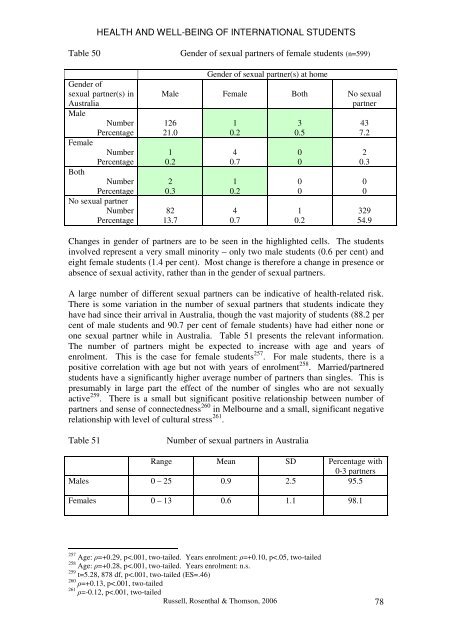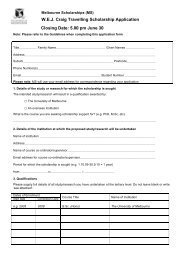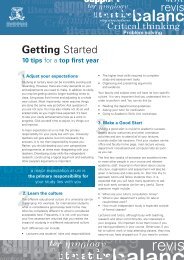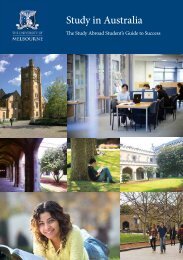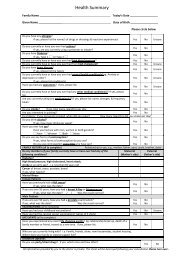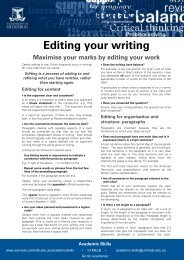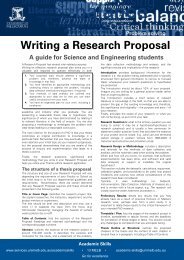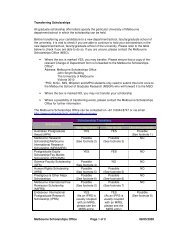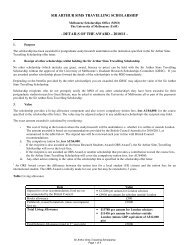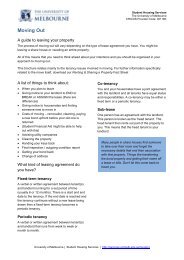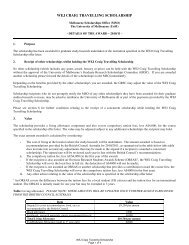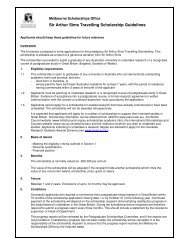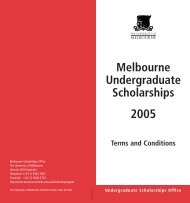a growing experience - Student Services - University of Melbourne
a growing experience - Student Services - University of Melbourne
a growing experience - Student Services - University of Melbourne
You also want an ePaper? Increase the reach of your titles
YUMPU automatically turns print PDFs into web optimized ePapers that Google loves.
HEALTH AND WELL-BEING OF INTERNATIONAL STUDENTSTable 50Gender <strong>of</strong>sexual partner(s) inAustraliaMaleNumberPercentageFemaleNumberPercentageBothNumberPercentageNo sexual partnerNumberPercentageGender <strong>of</strong> sexual partners <strong>of</strong> female students (n=599)Gender <strong>of</strong> sexual partner(s) at homeMale Female Both No sexualpartner12621.010.220.38213.710.240.710.240.730.5000010.2437.220.30032954.9Changes in gender <strong>of</strong> partners are to be seen in the highlighted cells. The studentsinvolved represent a very small minority – only two male students (0.6 per cent) andeight female students (1.4 per cent). Most change is therefore a change in presence orabsence <strong>of</strong> sexual activity, rather than in the gender <strong>of</strong> sexual partners.A large number <strong>of</strong> different sexual partners can be indicative <strong>of</strong> health-related risk.There is some variation in the number <strong>of</strong> sexual partners that students indicate theyhave had since their arrival in Australia, though the vast majority <strong>of</strong> students (88.2 percent <strong>of</strong> male students and 90.7 per cent <strong>of</strong> female students) have had either none orone sexual partner while in Australia. Table 51 presents the relevant information.The number <strong>of</strong> partners might be expected to increase with age and years <strong>of</strong>enrolment. This is the case for female students 257 . For male students, there is apositive correlation with age but not with years <strong>of</strong> enrolment 258 . Married/partneredstudents have a significantly higher average number <strong>of</strong> partners than singles. This ispresumably in large part the effect <strong>of</strong> the number <strong>of</strong> singles who are not sexuallyactive 259 . There is a small but significant positive relationship between number <strong>of</strong>partners and sense <strong>of</strong> connectedness 260 in <strong>Melbourne</strong> and a small, significant negativerelationship with level <strong>of</strong> cultural stress 261 .Table 51Number <strong>of</strong> sexual partners in AustraliaRange Mean SD Percentage with0-3 partnersMales 0 – 25 0.9 2.5 95.5Females 0 – 13 0.6 1.1 98.1257 Age: =+0.29, p


